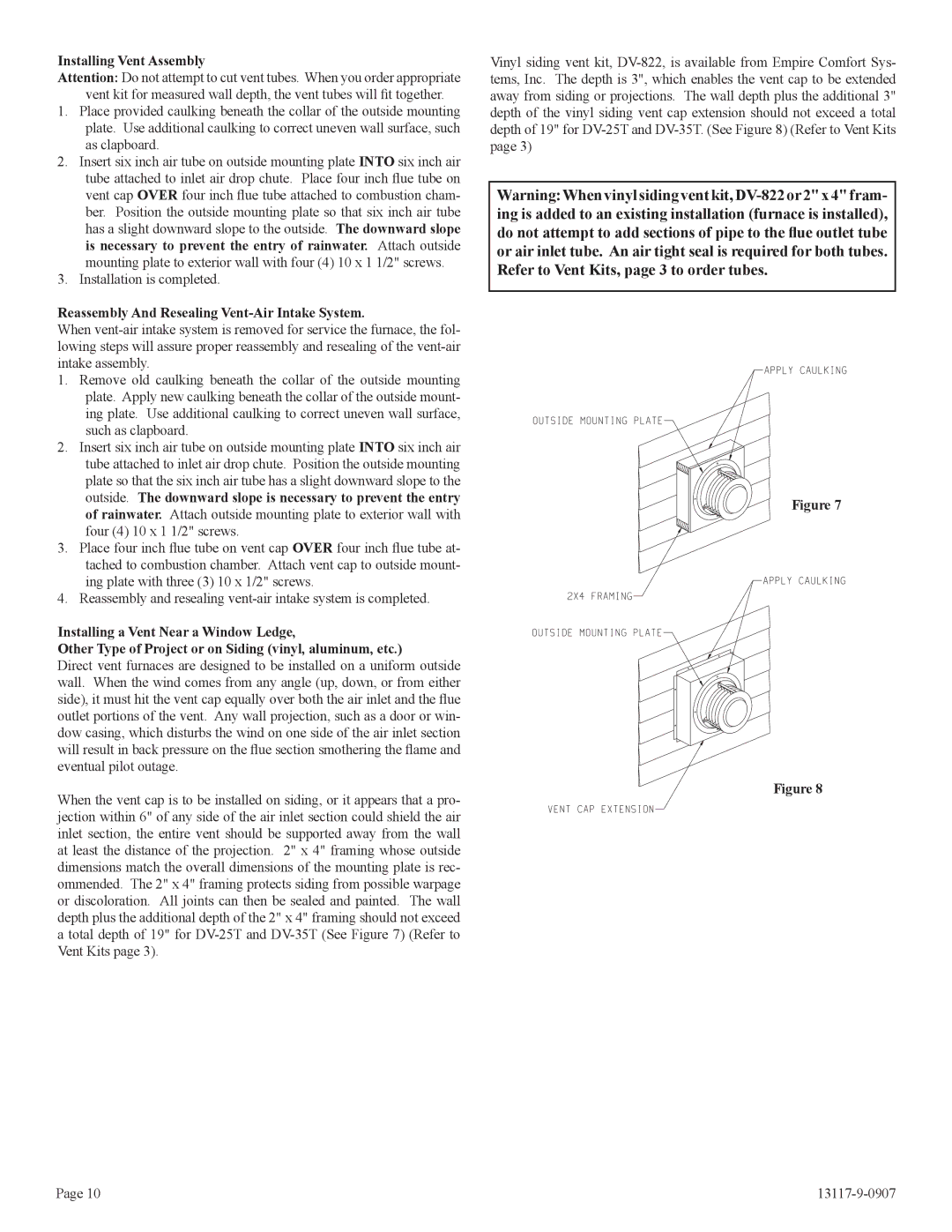
Installing Vent Assembly
Attention: Do not attempt to cut vent tubes. When you order appropriate vent kit for measured wall depth, the vent tubes will fit together.
1.Place provided caulking beneath the collar of the outside mounting plate. Use additional caulking to correct uneven wall surface, such as clapboard.
2.Insert six inch air tube on outside mounting plate INTO six inch air tube attached to inlet air drop chute. Place four inch flue tube on vent cap OVER four inch flue tube attached to combustion cham- ber. Position the outside mounting plate so that six inch air tube has a slight downward slope to the outside. The downward slope is necessary to prevent the entry of rainwater. Attach outside mounting plate to exterior wall with four (4) 10 x 1 1/2" screws.
3.Installation is completed.
Reassembly And Resealing Vent-Air Intake System.
When
1.Remove old caulking beneath the collar of the outside mounting plate. Apply new caulking beneath the collar of the outside mount- ing plate. Use additional caulking to correct uneven wall surface, such as clapboard.
2.Insert six inch air tube on outside mounting plate INTO six inch air tube attached to inlet air drop chute. Position the outside mounting plate so that the six inch air tube has a slight downward slope to the outside. The downward slope is necessary to prevent the entry of rainwater. Attach outside mounting plate to exterior wall with four (4) 10 x 1 1/2" screws.
3.Place four inch flue tube on vent cap OVER four inch flue tube at- tached to combustion chamber. Attach vent cap to outside mount- ing plate with three (3) 10 x 1/2" screws.
4.Reassembly and resealing
Installing a Vent Near a Window Ledge,
Other Type of Project or on Siding (vinyl, aluminum, etc.)
Direct vent furnaces are designed to be installed on a uniform outside wall. When the wind comes from any angle (up, down, or from either side), it must hit the vent cap equally over both the air inlet and the flue outlet portions of the vent. Any wall projection, such as a door or win- dow casing, which disturbs the wind on one side of the air inlet section will result in back pressure on the flue section smothering the flame and eventual pilot outage.
When the vent cap is to be installed on siding, or it appears that a pro- jection within 6" of any side of the air inlet section could shield the air inlet section, the entire vent should be supported away from the wall at least the distance of the projection. 2" x 4" framing whose outside dimensions match the overall dimensions of the mounting plate is rec- ommended. The 2" x 4" framing protects siding from possible warpage or discoloration. All joints can then be sealed and painted. The wall depth plus the additional depth of the 2" x 4" framing should not exceed a total depth of 19" for
Vinyl siding vent kit,
Warning: When vinyl siding vent kit,
Figure 7
Figure 8
Page 10 |
